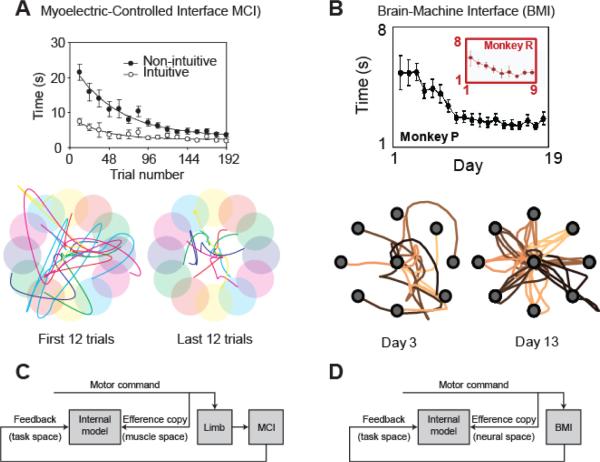Fig. 2.
A. Learning curves for MCI performance. Average trial time reaches a comparable level irrespective of whether the decoding algorithm is intuitive (muscles act on the cursor in directions that are consistent with their action on the limb) or non-intuitive (muscles act in random directions). By the end of a single training session, subjects make fast, straight movements to the target. Adapted from [63]. B. Learning curves for BMI performance with the same neural population. Average trial time decreases over successive days for two monkeys. In this case the decoding algorithm was biomimetic (intuitive). Subsequent training on a randomized (non-intuitive) decoder required several more days to be optimized (not shown; see Fig. 6 in [13]). Adapted from [13]. C, D. Proposed model for learning MCI and BMI control involves acquiring the mapping between a copy of the efferent command signal and task-space feedback provided by the interface.

